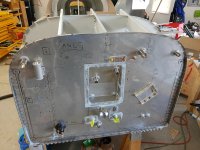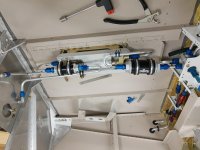rmartingt
Well Known Member
Good point on the vibration. I may yet (probably will) revise this concept a little more. I wish I had some hoses to play with but until I nail down where this regulator is going I?m sort of trying to eyeball it.Return line swivel fitting - hope the line is well stabilized between that & engine as there is only an o-ring inside that fitting & wouldn't do well if line vibration is present.
I guess one thing I could do would be to put a little bracket with a bulkhead fitting on the firewall and run the hose to that, then hardline to the regulator. Will have to look at that.
I?ve also found some fittings with instrumentation taps: https://www.anplumbing.com/adapters/gaugesandadapters.html
With the bulkhead fitting and bracket idea this might be a little more secure. I?d probably fit a restrictor from McMaster on the port.
Good to know on the wiring bundles. With the stacked battery the lower one won?t come straight out anyway; I?m expecting to have to pull the box off to get the battery out (and/or remove the upper box). But I?ll watch out for penetrations over the batteries. (the ones in the picture I literally just plopped down semi-randomly in a few seconds?I haven?t started routing any wires yet outside the wings).Wiring bundle for SDS systems is about same diameter as EGT/CHT wiring bundle, plus the odd wire for engine sensors. Battery cable penetrations will probably be as big or a bit bigger. Caution on having a penetration above the battery tray, might be tough to get battery in & out.







